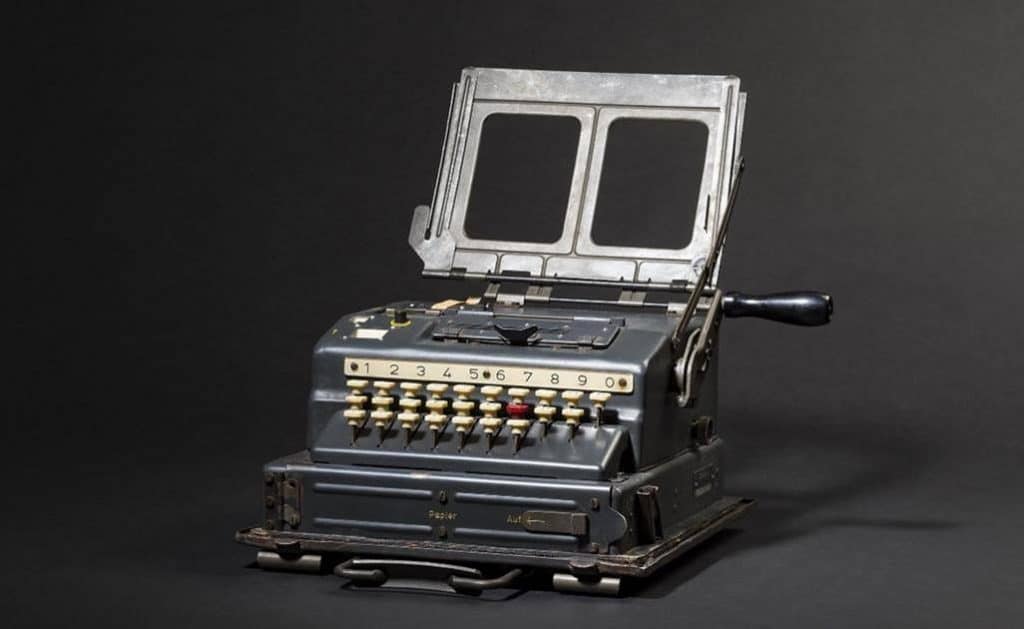The device is so rare that even the world’s largest science and technology museum, the Deutsches Museum in Munich, was thrilled to receive one recently that had been excavated, heavily corroded and clearly not functional, as an archaeological find. Thus, the sale of the Schlüsselgerät 41 cipher machine is one of the highlights of Hermann Historica’s Spring Auction, which takes place from 20 to 24 May. Dubbed the “Hitler Mill” owing to its crank mechanism, only a handful of functional devices still exist throughout the world. Bids are now invited from 75,000 euros for lot number 4401, a perfectly preserved specimen, which is to come under the hammer on May 24.
Those in the know are one step ahead; but victory comes to those who know more at an early stage. Working on this assumption, the British secret service had assembled the country’s most outstanding analysts in Bletchley Park, people from a wide range of professions, to collaborate on decrypting the enemy’s coding machines. While the leaders of the Wehrmacht, apart from a few warning voices, were reassured by the fact that the legendary Enigma cipher machine was said to be unbreakable, the British cryptanalysts, led by the mathematician Alan Turing, had already deciphered its underlying principle in spring 1940 and were able to transform encrypted messages into plain text at the flick of a switch from 1941.
It was only at this juncture that the Wanderer Werke in Chemnitz were commissioned to develop a new, improved machine. Based on significant input from the cryptologist Fritz Menzer (1908 – 2005), the purely mechanical Schlüsselgerät 41 was now modelled on the fundamental principle developed by the Swedish cryptologist Boris Hagelin (1882 – 1983), albeit with important modifications. The name of the machine derives from the year of its invention. Unlike the Enigma, which used lamps for the letters, it worked with two reels of paper; the encryption process involved turning the drum through 360 degrees with the attached crank handle. This rotated six cipher wheels, rather than the previous three, of differing sizes, in a highly irregular motion, sometimes even backwards. Moreover, the position of one wheel affected the movement of the others. The recipient had to set the wheels in the identical starting position before entering the encrypted text. The plain text and the encrypted message were printed in parallel on two strips of paper. Of the 11,000 devices ordered, only approximately 500 units were shipped to the Abwehr, or military intelligence service, and another 1,000 to the weather service, from October 1944. However, the latter was supplied with the SG-41Z numerical version, with numbers instead of letter keys. Weighing in at 13 kilos, the SG-41 was deemed too heavy for front line use.
Even the experts in England failed to reconstruct – and thus decipher – the SG-41 by the end of the war. Accordingly, the allies described the cipher machine with deference as a “remarkable machine”. How many more years World War II would have lasted, had this new encryption technique been deployed earlier, is still widely debated today; although the outcome was probably inevitable.
-
- Assign a menu in Theme Options > Menus WooCommerce not Found





Related posts: